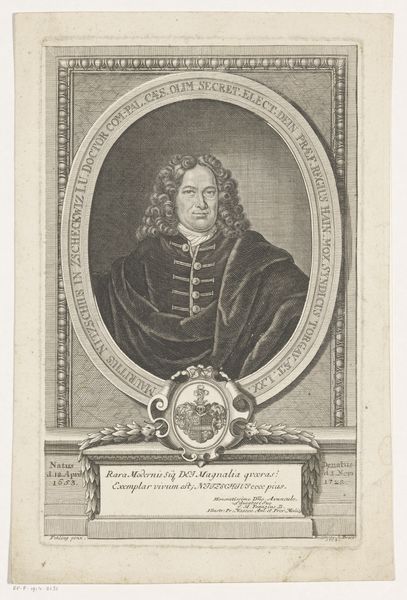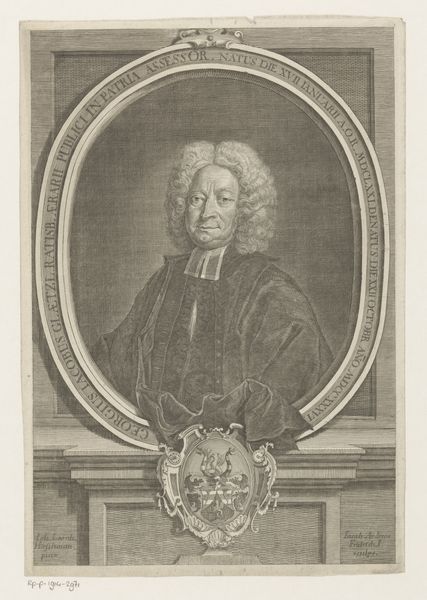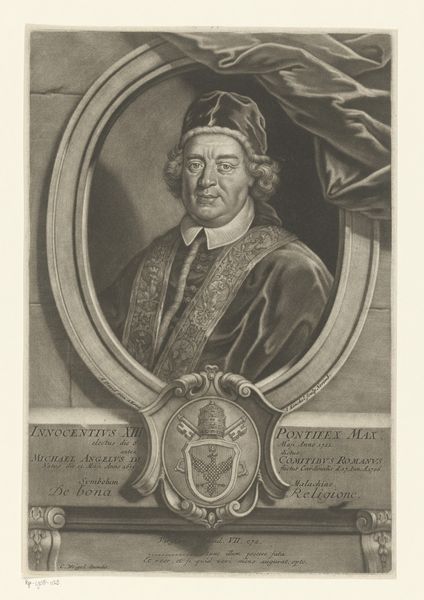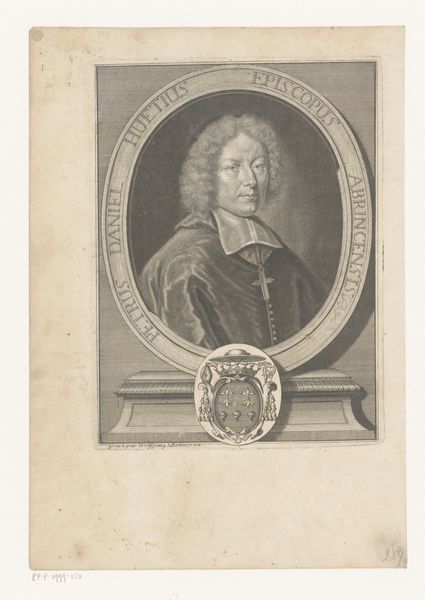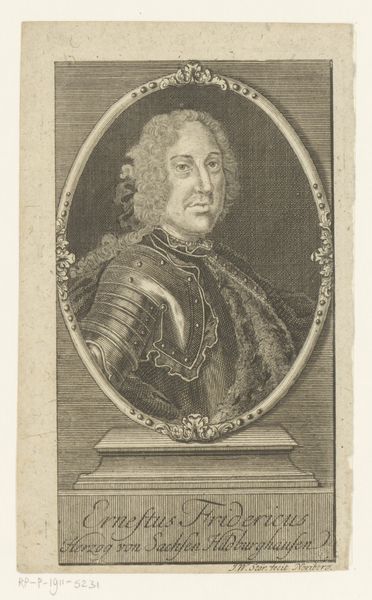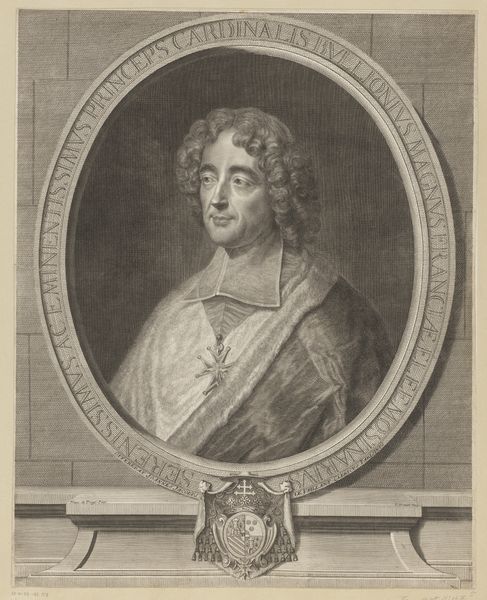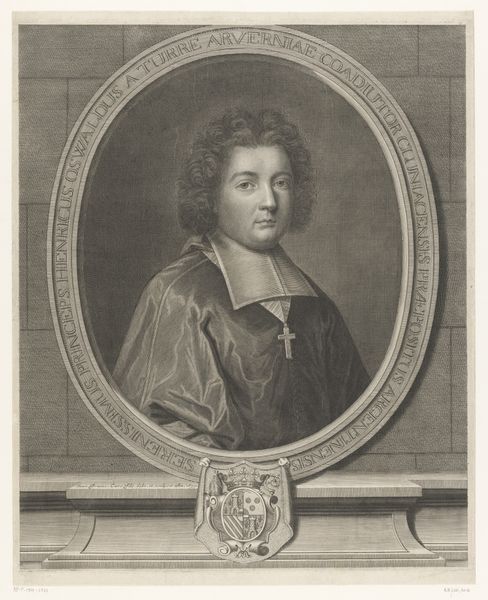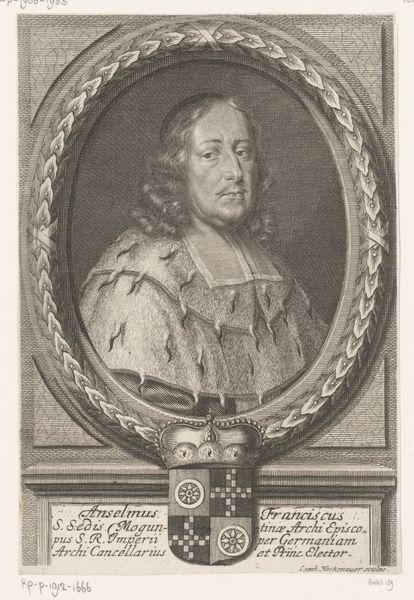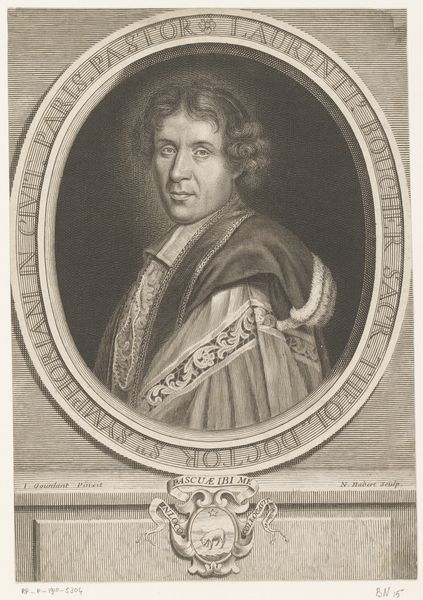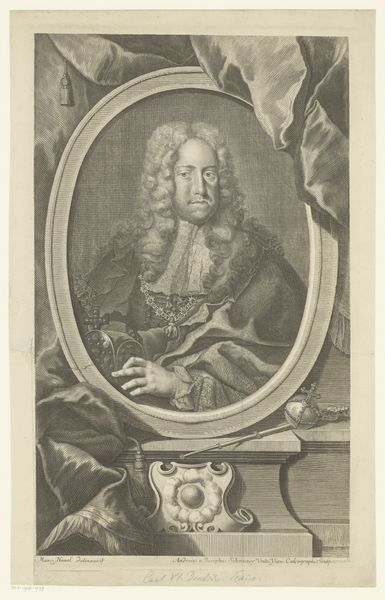
engraving
#
baroque
#
old engraving style
#
history-painting
#
engraving
Dimensions: height 335 mm, width 230 mm
Copyright: Rijks Museum: Open Domain
Curator: Let's turn our attention to this engraving. The museum holds this piece by Andreas Geyer, dating from somewhere between 1716 and 1729. It’s entitled “Portret van Christian August zu Sachsen-Zeitz.” Editor: It has such an imposing, almost melancholic aura. The way the subject is framed in that oval gives him an air of both authority and confinement, like a symbolic gilded cage. The somber color deepens that impact, conveying both respect and a sense of something withheld. Curator: Indeed, Andreas Geyer created this work in the baroque style. It is very characteristic of the portraits intended for circulation within the higher circles of the Church, the nobility, and the intellectual elite of the 18th century. As a bishop and a cardinal, Christian August had a place among the higher echelons of the elite of his time. Editor: The meticulous detail in the coat of arms adds layers to his identity – family lineage, office, and status markers intertwine. It reminds us how identity itself was conceived during that era, a fusion of inherited and earned symbols. Did these figures consciously control their images, shaping public perception? Curator: Absolutely! These portraits became crucial tools in constructing identity and exercising soft power through disseminating curated imagery of prominent figures. Visual representations supported claims of authority and shaped political landscapes. Engravings were distributed among European leaders and clergy as diplomatic gifts. Editor: Fascinating! Beyond pure politics, consider the symbols incorporated into the portrait: the staff and mitre obviously relate to his office as bishop, but look at the expressions depicted within the coat of arms: all of these shapes carry a certain psychological weight; even the cherubs at the top could either encourage the subject or serve as symbolic warnings for their earthly excesses. Curator: That resonates powerfully! What appears as simple historical record gains renewed life when examined through these layers of symbols. Geyer's work serves as a critical document to examine image culture, elite power structures, and the very staging of public persona that remains crucial even today. Editor: Precisely! We come to see these images as mirrors reflecting more than simple physical likeness; they offer profound cultural, political, and deeply human reflections.
Comments
No comments
Be the first to comment and join the conversation on the ultimate creative platform.
